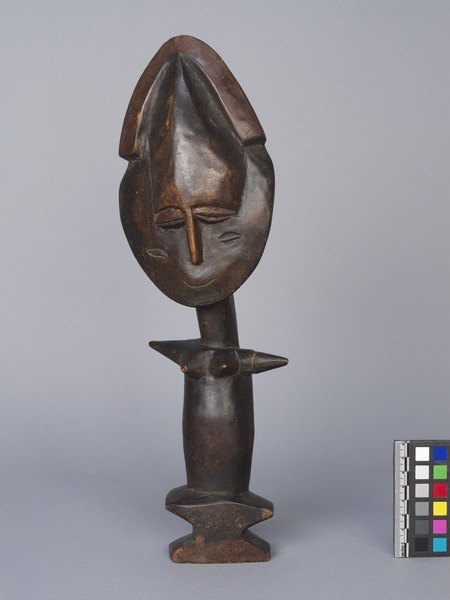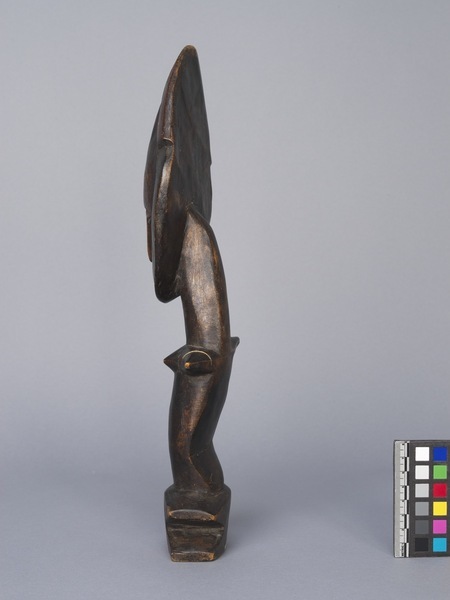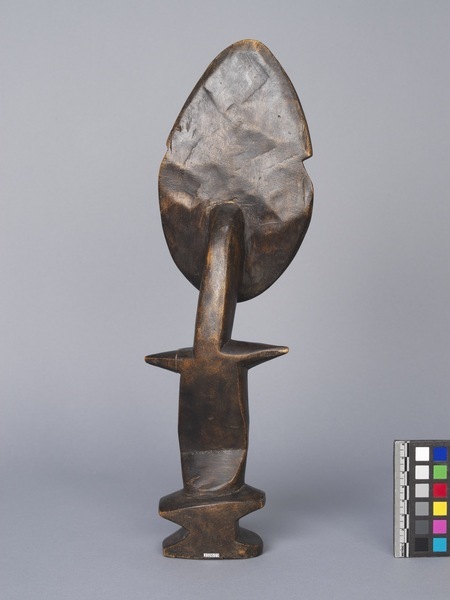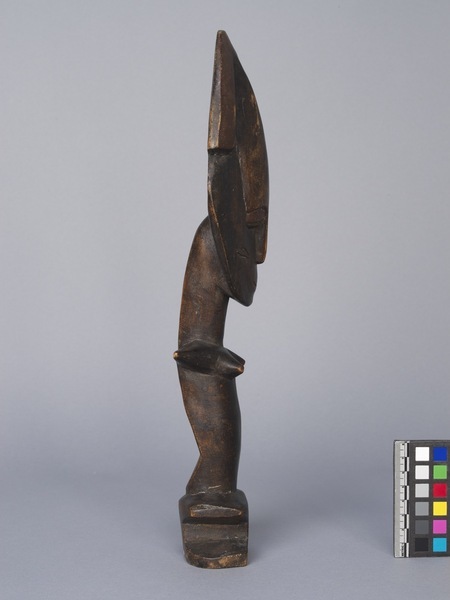Fertility Figure Item Number: 3326/23 from the MOA: University of British Columbia




Description
Fertility figure (akuaba) with a flat, disc-shaped head sitting on a long cylindrical neck that slightly curves forward. The lower rounded portion of the face has small horizontal oval eyes with a slit across the middle, two horizontal lines on each cheek, and a small smiling mouth. The raised oval forehead extends down into a long vertical nose and arched brow ridge. The upper edge has a raised arch. The abstract conical arms mimic the shape of the small pointed breasts. The lower half of the body is cylindrical, with an inward bend on the lower back, ending with an anvil-shaped base.
History Of Use
Akuaba fertility figures were carved for young Asante women in order to promote fertility and to ensure the beauty of a child. Women would have them carved by an adwinfo (carver), who were usually recommended to them by a priest. The figures were then carried close to the body, often wrapped in cloth around the waist or back, and treated like a real child. A woman would carry the figure until she became visibly pregnant or until she gave birth. After the birth of the child, Akuaba figures would often be used in shrines or as an offering to the gods. They were also sometimes used as memorials to children and became family heirlooms that were taken care of and passed down through generations. The origins of this practice are from the story of Akua, an Akan woman who was infertile but strongly desired children. She was instructed by a priest to commission a carving of a child which she would carry and treat as if it were real. Despite being ridiculed, Akua followed the instructions and was able to conceive a child. The practice was soon adopted throughout the region. Akuaba are now commonly sold in markets and used for decoration.
Iconographic Meaning
The shape of the Akuaba figure represents the idealized standard of beauty for the Akan. The varying sizes of the different parts of the body are a reflection of an Akan carver’s idea of "proportions of significance". The head in most cases is large and the most dominate feature of the figure as it is considered the seat of wisdom, life, and survival. Akuaba figures would also be decorated with beads to ensure that child would be beautiful and as a way to show wealth, and how well cared for the child would be. All traditional Akuaba figures are female images, primarily because Akua's first child was a girl but also because Akan society was matrilineal.
Item History
- Made in Ghana
- Owned by Jack Lieber before 2015
- Owned by Iris Lieber before June 18, 2018
- Received from Iris Lieber (Donor) on June 18, 2018
What
Who
- Culture
- Asante
- Previous Owner
- Jack Lieber and Iris Lieber
- Received from
- Iris Lieber (Donor)
Where
- Holding Institution
- MOA: University of British Columbia
- Made in
- Ghana
When
- Ownership Date
- before 2015 and before June 18, 2018
- Acquisition Date
- on June 18, 2018
Other
- Item Classes
- carvings & sculpture
- Condition
- fair
- Accession Number
- 3326/0023